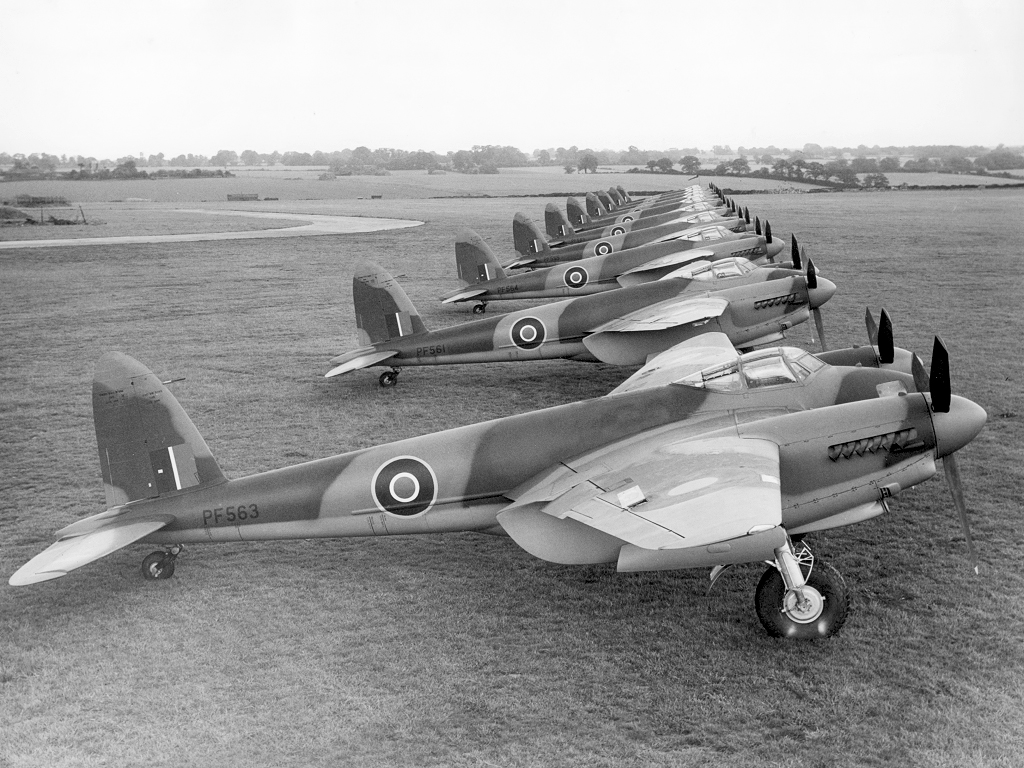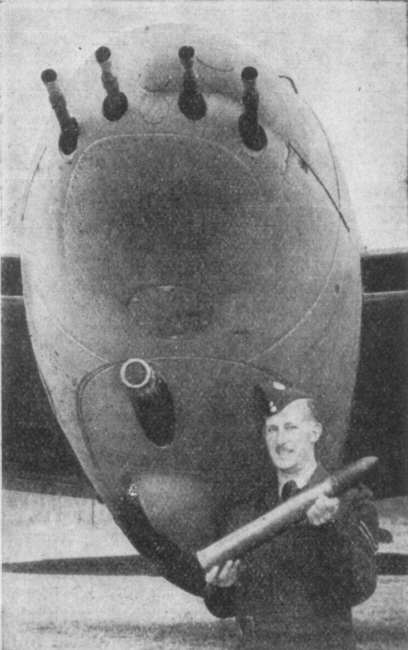In addition to downing 278 German night fighters, the Mosquitoes also caused a number of German planes to crash when performing emergency landings to avoid the Mosquitoes (real or imagined)
Without a doubt, de Havilland made the most significant contribution to the RAF’s victory in the Second World War with the incredibly versatile and high-performance DH98 Mosquito. The design, which employed a wooden sandwich construction and drew inspiration from the DH88 Comet Racer and the DH91 Albatross airliner, led to the nickname “The Wooden Wonder.”
The Mosquito, which was first designed as a high-flying, unarmed photo-reconnaissance aircraft, served in a variety of roles, including bomber, fighter-bomber, night-fighter, anti-shipping attack, trainer, torpedo bomber, and target tug. The Mosquito was likely the Allied warplane that the Axis feared the most during World War II.
‘Toward the end of the war, the German night fighter pilots began suffering from a bad case of what they called “Moskitoschreck” or “Mosquito terror” as the British Mosquitoes began sneaking up on them from behind as they were sneaking up on the British bombers,” explains David Moe, an aviation expert on Quora. ‘The Mosquitoes shot down several hundred German night fighters (278 total), in addition to which a number of German fighters crashed while making emergency landings to avoid Mosquitoes (real or imagined). Just a rumor that there were Mosquitoes around was enough to make the German pilots want to land as fast as possible.

‘In addition to being much faster than the German night fighters due to their twin Rolls Royce Merlin engines, the Mosquitoes carried four machine guns in their nose and four cannons in their fuselage. They were fitted with a device called Serrate which allowed them to detect night fighters by the night fighters’ radar emissions, as well as another device called Perfectos which allowed them to detect night fighters by emissions from their IFF (Identification Friend or Foe) systems. This meant the German night fighters didn’t have much of a chance.
‘But actually, the Mosquito was originally designed as an unarmed, fast, light bomber. It had the unusual characteristic that it was built out of wood, but despite that was faster than any of the German fighters except the jets. The British would have canceled it at the start of the war, except that it could be built in woodworking factories and thus not affect aluminum aircraft production. It was called the “Wooden Wonder” or “Timber Terror” by affectionate pilots.’
Moe continues:
‘For the most part, as a light bomber it was used to fly above or below German anti-aircraft defenses and simply outrun German fighters. By the time the German interceptors reached their altitude, the Mosquitoes had already dropped their bomb load and were on their way home. It was estimated that during a raid a Mosquito could fly to Germany, drop a 4000-pound bomb, go back to Britain, refuel, fly back to Germany, drop another 4000-pound bomb, and get back to Britain before the last of the heavy bombers got home.

‘The British used to send them in ahead of the heavy bombers as pathfinders to drop incendiary bombs to mark the targets and follow the heavy bombers with Mosquitoes to kill the German night fighters. The loss rate was very low (0.7% chance of being shot down vs 2.2% for the heavy bombers). The Mosquitoes dropped twice as much tonnage of explosives as the heavy bombers per aircraft lost – and it only had a two-man crew versus a seven-man crew for the heavy bombers.
‘It was also used in surprise raids on German targets. After Mosquitoes bombed the main radio station in Berlin in a carefully timed raid during one of his speeches, Goring remarked that it was unfair that, while his air force was short of aluminum to build planes, every piano factory in Britain was building Mosquitoes.’
Moe concludes:
‘Over Britain, they also shot down 486 V1 flying bombs, since they were among the few aircraft fast enough to catch it.
‘The below is a Mosquito “Tsetse” equipped with a 57 mm anti-submarine gun mounted under the nose. It was capable of blowing a hole through both sides of a German U-boat if it caught it on the surface. That was more than enough to sink a U-boat.’

Photo by BAE Systems, Crown Copyright, De Havilland photographer for Ministry of Aircraft Production

